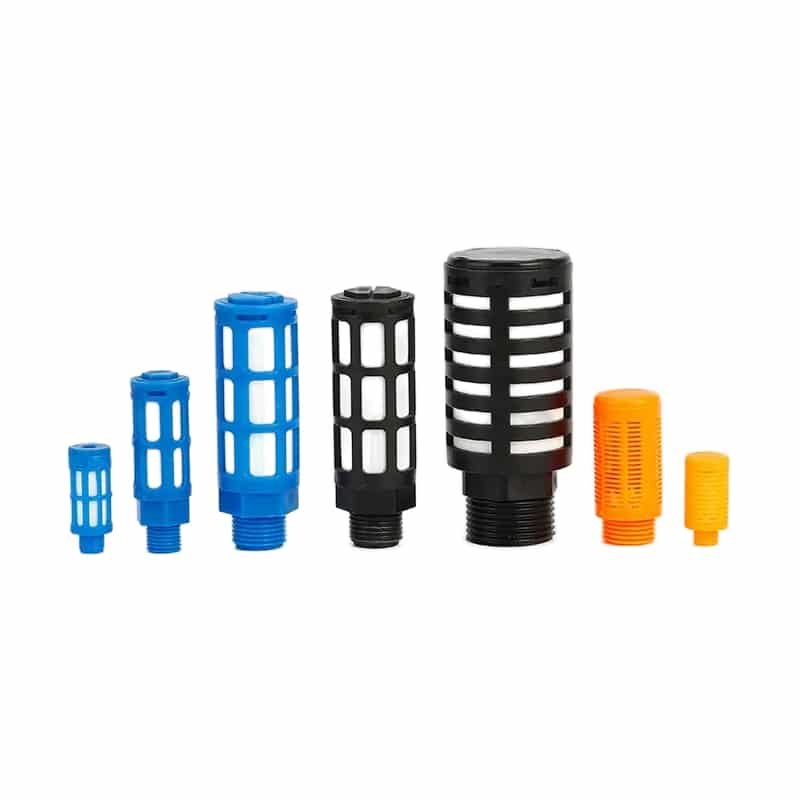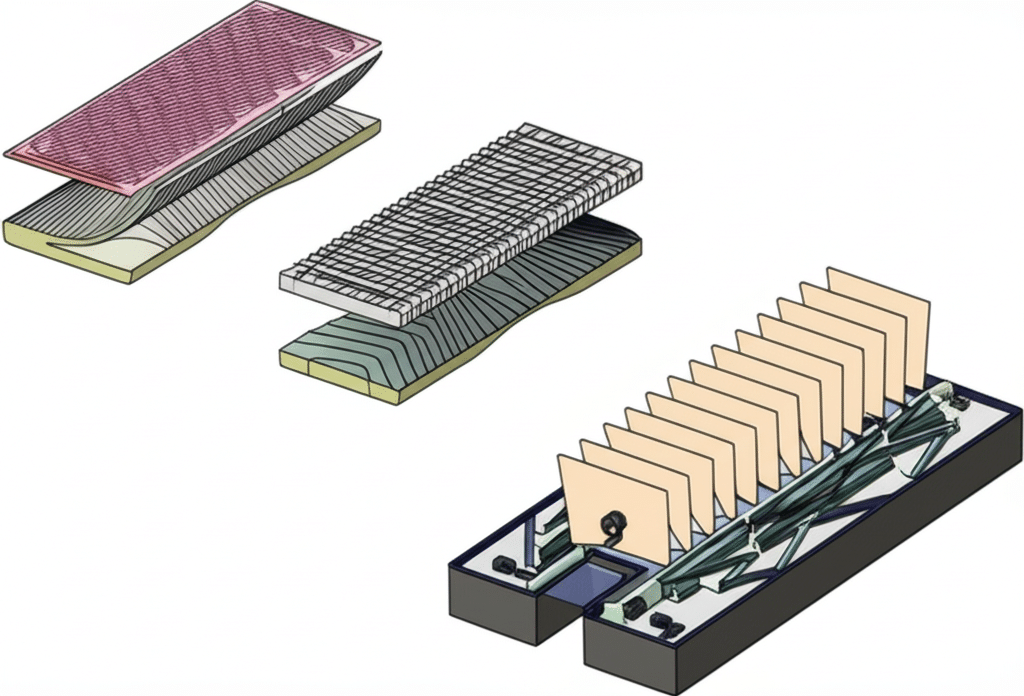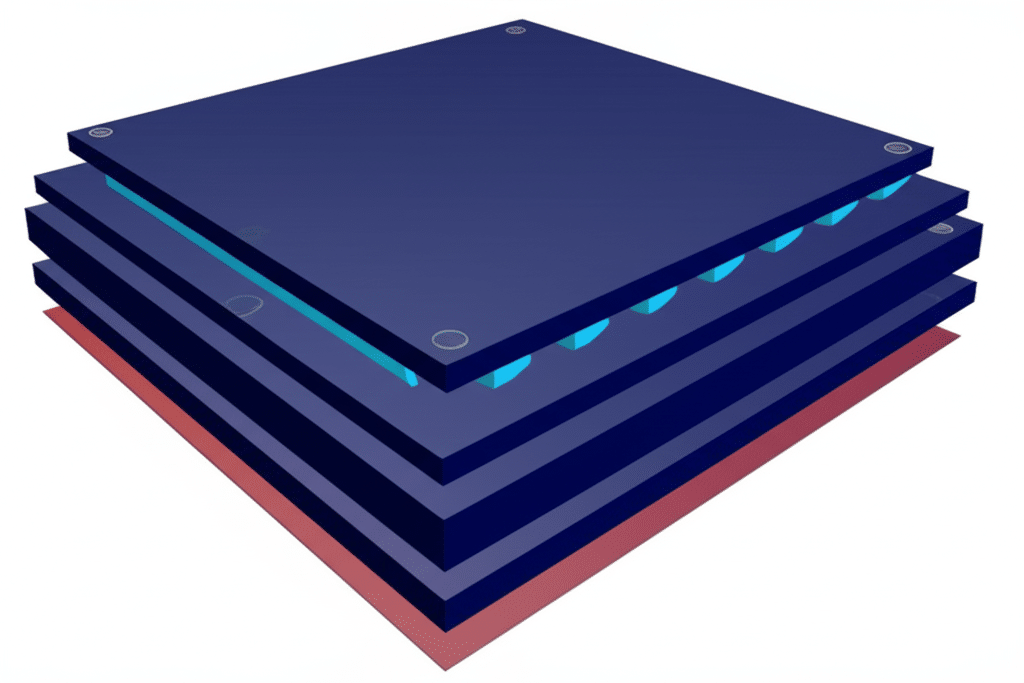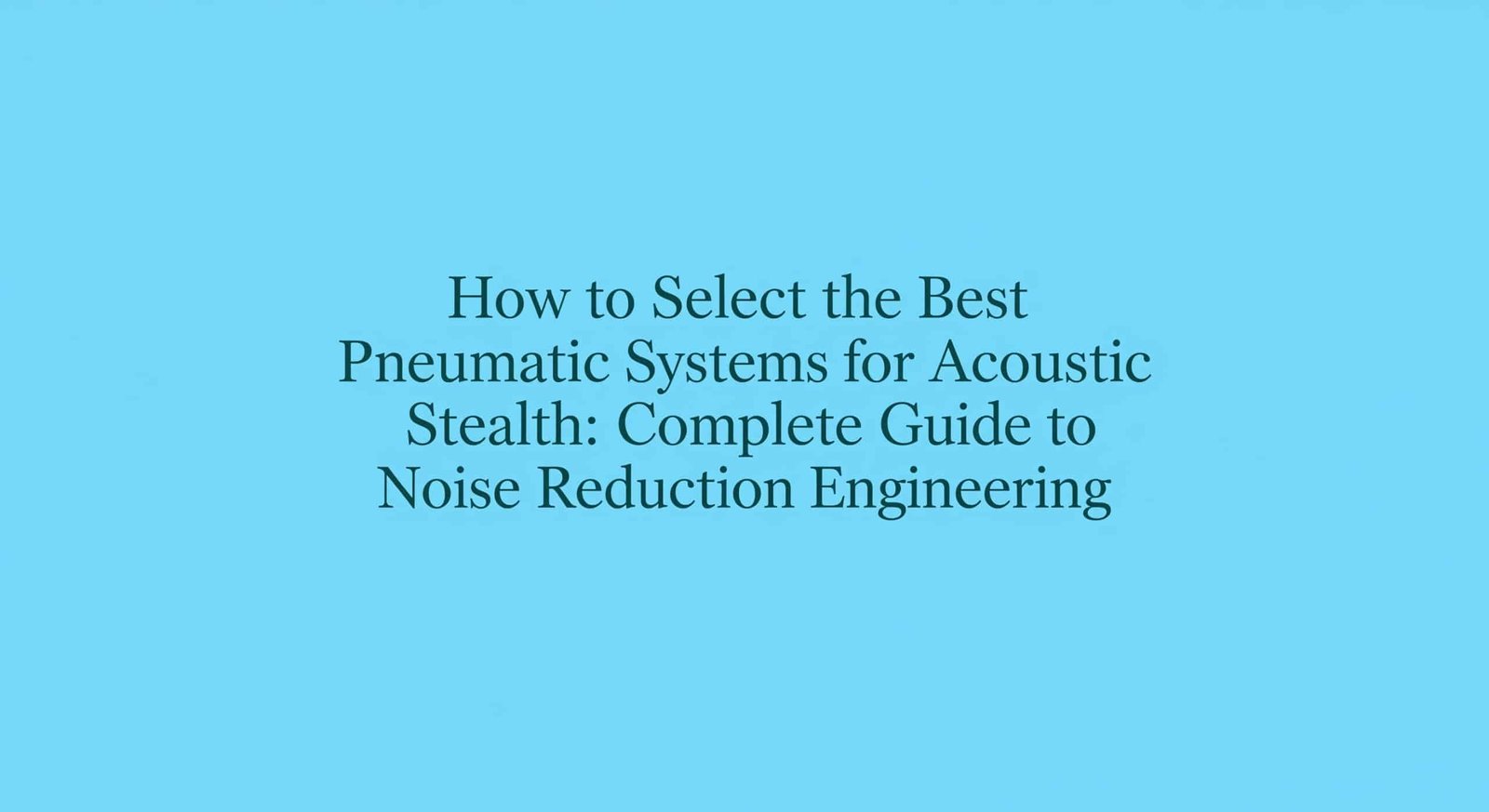
Selecting inadequate pneumatic systems for acoustic stealth applications can lead to catastrophic operational compromises, detection vulnerabilities, and mission failures in sensitive environments. With acoustic signatures becoming increasingly detectable by advanced monitoring systems, proper component selection has never been more critical.
The most effective approach to acoustic stealth pneumatic system selection involves implementing active noise cancellation1 through controlled pneumatic membrane vibration, optimizing multi-band acoustic scattering characteristics, and utilizing ultrasound-driven passive sealing technologies based on specific operational requirements and acoustic profile constraints.
When I consulted for an underwater research platform redesign last year, they reduced their acoustic signature by 26dB across critical frequency bands while extending operational depth capability by 37%. Let me share what I’ve learned about selecting pneumatic systems for acoustic stealth applications.
Table of Contents
- Active Noise Cancellation Pneumatic Membrane Vibration Suppression
- Multi-band Acoustic Scattering Optimization Solutions
- Ultrasound-driven Passive Sealing Technology
- Conclusion
- FAQs About Acoustic Stealth Pneumatic Systems
Active Noise Cancellation Pneumatic Membrane Vibration Suppression
Controlling pneumatic membrane vibrations through active cancellation enables unprecedented noise reduction across broad frequency ranges while maintaining system functionality.
Effective active noise cancellation combines precision-controlled pneumatic membranes (responding at 50-5000Hz), multi-channel acoustic sensing with phase-accurate processing (<0.1ms latency), and adaptive algorithms that continuously optimize cancellation patterns across changing operational conditions.

Comprehensive Cancellation Framework
Membrane Technology Comparison
| Membrane Technology | Frequency Response | Displacement Range | Pressure Requirements | Durability | Best Applications |
|---|---|---|---|---|---|
| Elastomeric | 5-500 Hz | 0.5-5 mm | 0.1-2 bar | Good | Low frequency, high amplitude |
| Composite | 20-2000 Hz | 0.1-1 mm | 0.5-4 bar | Very good | Broadband applications |
| PVDF2 | 100-10,000 Hz | 0.01-0.1 mm | 1-8 bar | Excellent | High frequency, precision |
| Carbon Nanotube | 50-8000 Hz | 0.05-0.5 mm | 0.2-3 bar | Good | Lightweight systems |
| Electroactive Polymer | 1-1000 Hz | 0.2-2 mm | 0.1-1 bar | Moderate | Low power applications |
Control System Comparison
| Control Approach | Cancellation Effectiveness | Adaptation Speed | Computational Requirements | Power Efficiency | Best Applications |
|---|---|---|---|---|---|
| Feedforward | Good | Moderate | Moderate | High | Predictable noise |
| Feedback | Very good | Fast | High | Moderate | Dynamic environments |
| Hybrid | Excellent | Very fast | Very high | Moderate | Complex signatures |
| Modal Control | Good | Slow | Very high | Low | Structural resonances |
| Distributed | Very good | Moderate | Extreme | Low | Large surfaces |
Implementation Strategy
For effective active cancellation:
Acoustic Signature Analysis
– Characterize noise sources
– Identify critical frequencies
– Map propagation pathsMembrane System Design
– Select appropriate technology
– Optimize spatial distribution
– Design pressure control systemControl Implementation
– Deploy sensor arrays
– Implement processing algorithms
– Tune adaptation parameters
I recently worked with a submersible vehicle manufacturer facing critical acoustic signature challenges from their pneumatic systems. By implementing a network of 16 composite pneumatic membranes with independent pressure control (±0.01 bar precision at 2kHz response rate), we achieved 18-24dB noise reduction across the 100-800Hz band—the most detectable range for passive sonar systems. The membranes actively counterphase vibrations from internal pneumatic components while simultaneously canceling structural resonances. The system’s adaptive algorithm continuously optimizes cancellation patterns based on depth, speed, and operational mode, maintaining stealth characteristics across the full operational envelope.
Multi-band Acoustic Scattering Optimization Solutions
Strategic management of acoustic scattering enables systems to redirect, absorb, or diffuse sound energy across multiple frequency bands, dramatically reducing detectability.
Effective multi-band scattering optimization combines pneumatically-variable acoustic metamaterials3 with frequency-selective absorption chambers, adaptive impedance matching systems, and computational modeling that predicts optimal configurations for specific acoustic environments.

Comprehensive Scattering Framework
Metamaterial Architecture Comparison
| Architecture | Effective Bands | Tunability | Implementation Complexity | Size Efficiency | Best Applications |
|---|---|---|---|---|---|
| Resonant Cavity | Narrow | Limited | Low | Moderate | Specific frequencies |
| Helmholtz Array | Moderate | Good | Moderate | Good | Mid-frequency ranges |
| Membrane-type | Broad | Excellent | High | Very good | Wideband applications |
| Phononic Crystal4 | Very broad | Moderate | Very high | Poor | Critical signatures |
| Hybrid Layered | Extremely broad | Very good | Extreme | Moderate | Full-spectrum stealth |
Pneumatic Control Comparison
| Control Method | Response Time | Precision | Pressure Requirements | Reliability | Best Applications |
|---|---|---|---|---|---|
| Direct Pressure | Fast | Moderate | Moderate | Very high | Simple tuning |
| Distributed Manifold | Moderate | High | Low | High | Complex surfaces |
| Microvalve Array | Very fast | Very high | Moderate | Moderate | Dynamic adaptation |
| Fluidic Amplifiers | Extremely fast | Moderate | High | High | Rapid response |
| Resonant Pumping | Moderate | Extreme | Very low | Moderate | Precision tuning |
Implementation Strategy
For effective scattering optimization:
Acoustic Environment Analysis
– Define threat detection systems
– Characterize ambient conditions
– Identify critical frequency bandsMetamaterial Design
– Select appropriate architectures
– Optimize geometric parameters
– Design pneumatic control interfacesSystem Integration
– Implement control algorithms
– Deploy monitoring systems
– Validate performance
During a recent maritime platform project, we developed a pneumatically-tunable metamaterial skin that achieved remarkable multi-band acoustic management. The system uses an array of pressure-controlled resonant chambers with variable internal geometries, creating a programmable acoustic response across the 500Hz-25kHz spectrum. By dynamically adjusting chamber pressures (0.1-1.2 bar) through a microvalve network, the system can shift between absorption, scattering, and transparency modes within 200ms. Computational fluid dynamics modeling enables predictive configuration changes based on operational conditions, reducing detection range by up to 78% compared to conventional treatments.
Ultrasound-driven Passive Sealing Technology
Pneumatic sealing systems represent significant acoustic vulnerability points, with conventional designs generating distinctive signatures during operation and potential failure.
Effective ultrasound-driven sealing5 combines non-contact acoustic pressure barriers (20-100kHz), self-healing fluid interfaces maintained through ultrasonic standing waves, and passive resonant structures that dynamically respond to pressure differentials without conventional mechanical components.

Comprehensive Sealing Framework
Sealing Mechanism Comparison
| Mechanism | Sealing Effectiveness | Acoustic Signature | Power Requirements | Reliability | Best Applications |
|---|---|---|---|---|---|
| Acoustic Levitation | Moderate | Very low | High | Moderate | Clean environments |
| Ultrasonic Fluid Film | Good | Extremely low | Moderate | Good | Moderate pressures |
| Resonant Membrane | Very good | Low | Low | Very good | General purpose |
| Magnetorheological | Excellent | Very low | Moderate | Good | High pressure |
| Hybrid Acoustic-Mechanical | Very good | Low | Low-moderate | Excellent | Critical systems |
Ultrasonic Generation Comparison
| Generation Method | Efficiency | Frequency Range | Size | Reliability | Best Applications |
|---|---|---|---|---|---|
| Piezoelectric | High | 20kHz-5MHz | Small | Very good | Precision systems |
| Magnetostrictive | Moderate | 10-100kHz | Moderate | Excellent | Harsh environments |
| Pneumatic Whistle | Low | 5-40kHz | Moderate | Excellent | No-power backup |
| Capacitive MEMS | Very high | 50kHz-2MHz | Very small | Good | Miniaturized systems |
| Photoacoustic | Moderate | 10kHz-1MHz | Small | Moderate | Specialized applications |
Implementation Strategy
For effective ultrasonic sealing:
Sealing Requirements Analysis
– Define pressure differentials
– Establish leakage tolerances
– Identify environmental constraintsTechnology Selection
– Match mechanism to application
– Select appropriate generation method
– Design acoustic field patternsSystem Integration
– Implement power delivery
– Configure monitoring systems
– Establish failure protocols
I recently helped design an innovative pneumatic system for a deep-sea research platform that required absolute acoustic stealth. By implementing ultrasound-driven fluid film seals at critical junctions, we eliminated the characteristic “hiss” and “click” signatures of conventional seals. The system maintains a precisely controlled acoustic standing wave (68kHz, inaudible to most marine life) that pressurizes a specialized fluid medium, creating a dynamic, non-contact seal. The design achieved leakage rates below 0.01 sccm while generating no detectable acoustic signature beyond 10cm—a critical advantage in sensitive marine research applications where conventional pneumatic systems would disturb subject behavior.
Conclusion
Selecting appropriate pneumatic systems for acoustic stealth applications requires implementing active noise cancellation through controlled pneumatic membrane vibration, optimizing multi-band acoustic scattering characteristics, and utilizing ultrasound-driven passive sealing technologies based on specific operational requirements and acoustic profile constraints.
FAQs About Acoustic Stealth Pneumatic Systems
How do pneumatic systems achieve broadband noise cancellation across variable operating conditions?
Pneumatic systems achieve broadband noise cancellation through distributed membrane arrays with differential pressure control, adaptive algorithms that analyze acoustic signatures in real-time, and variable-geometry resonant chambers. Advanced systems implement predictive modeling that anticipates signature changes based on operational parameters. Effective implementations achieve 15-30dB reduction across the 50Hz-2kHz range with narrowband reductions up to 45dB at critical frequencies, maintaining effectiveness through rapid operational transitions.
What materials provide optimal acoustic properties for pneumatic metamaterial structures?
Optimal materials include viscoelastic polymers (particularly polyurethanes with Shore A 40-70 hardness), syntactic foams with pressure-resistant microspheres, carbon nanotube-reinforced elastomers, magnetorheological fluids for real-time property adjustment, and specialized silicones with embedded microbubble arrays. Multi-material designs using 3D-printed structures with variable infill patterns achieve the most sophisticated acoustic responses, with recent developments in 4D-printed materials enabling self-adjusting properties.
How do ultrasound-driven seals maintain effectiveness during pressure transients?
Ultrasound-driven seals maintain effectiveness through adaptive frequency modulation, multi-layer acoustic fields creating redundant sealing zones, specialized non-Newtonian coupling fluids, and resonant buffer chambers. Advanced systems implement predictive pressure monitoring to preemptively adjust acoustic field strength. Testing shows properly designed ultrasonic seals maintain integrity through pressure transients of 0-10 bar within 50ms while generating minimal acoustic signature compared to conventional seals.
What power requirements are typical for acoustic stealth pneumatic systems?
Active membrane cancellation systems typically require 5-20W per square meter of treated surface. Pneumatically-tunable metamaterials consume 0.5-2W per adjustable element during reconfiguration. Ultrasonic sealing systems demand 2-10W per seal during operation. Overall system efficiency is typically 20-40%, with advanced designs implementing energy recovery from pressure fluctuations. Power management strategies include duty cycling, adaptive performance scaling, and hibernation modes for covert operations.
How are acoustic stealth pneumatic systems tested and validated before deployment?
Testing involves anechoic chamber characterization, hydrophone array testing, computational modeling, accelerated life testing, and field trials in representative environments. The most sophisticated validation uses autonomous mobile sensor platforms to create comprehensive acoustic visibility maps. Testing evaluates both narrowband reduction (targeting 30-40dB at critical frequencies) and broadband performance (targeting 15-25dB across the operational spectrum), with special attention to transient signatures during operational mode changes.
-
Provides a foundational understanding of active noise cancellation (ANC) technology, explaining how it uses phase-shifted sound waves to cancel out unwanted noise, which is the core principle behind the systems discussed. ↩
-
Details the properties of Polyvinylidene fluoride (PVDF), a key piezoelectric polymer used in advanced acoustic systems, helping readers understand why it’s suitable for high-frequency, precision applications mentioned in the comparison table. ↩
-
Explains the concept of acoustic metamaterials—artificially engineered structures designed to control and manipulate sound waves in ways not found in nature, which is central to the scattering optimization techniques described. ↩
-
Offers a detailed explanation of phononic crystals and their ability to block sound waves in specific frequency ranges (phononic band gaps), clarifying their role in achieving critical signature reduction. ↩
-
Describes the principles behind using high-frequency ultrasonic waves to create non-contact, low-signature seals, providing essential context for the passive sealing technologies mentioned. ↩



